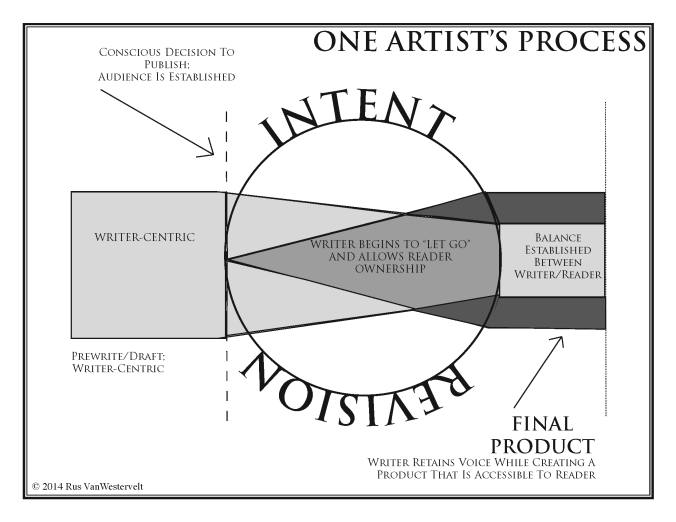Many years ago, Sharon Miller, National Writing Project Teacher-Consultant and nationally recognized author and educator in the teaching of writing, asked me to offer my thoughts on the power of revision in the genre of creative nonfiction and how, when we write with intent in the revision process and understand who our audience is, we can produce high-quality writing products that are both effective and accessible to our readers.
Recently, Sharon revisited my theories on revision and applied them to fiction writing. I am happy to say that, in her analysis, they still stand. You can read her complete discussion HERE.
I am humbled by Sharon’s discussion of my writing theories (especially regarding revision and the reader-writer connection) in both genres of creative nonfiction and fiction. Since she published my original assertions nearly 15 years ago, I have refined my theories on revision, with a focus on the writer’s intent once the decision is made to take a piece of writing to publication.
As shown in the updated graphic below, the writer “revises with intent,” keeping the intended audience in mind to ensure the reader’s accessibility to the content. But to best understand the role revision plays in writing, the writer also needs to understand what happens before the stage of revision even begins.
 In the early stages of drafting, the writer must provide herself with the opportunity to write uninhibitedly, to play with ideas and explore without judgment or even consideration of the potential audience. It is here that she allows her Voice, through her raw thoughts and ideas, to resonate as only she can do.
In the early stages of drafting, the writer must provide herself with the opportunity to write uninhibitedly, to play with ideas and explore without judgment or even consideration of the potential audience. It is here that she allows her Voice, through her raw thoughts and ideas, to resonate as only she can do.
In this early drafting stage, the entire focus should be to understand exactly what the writer wants to say, and why.
The “how” all of this is done is the focus in the revision stage. This is the point when the writer understands — and agrees upon — the establishment of a working relationship with the reader. It is here that the journey begins to “let go” of a reasonable amount of the raw writing while still maintaining the essence of her voice in a polished work that keeps the writing, the message, and the connection with the reader authentic.
Writers of academic and creative writing often procrastinate and wait until the final hours of their deadline to create a piece of writing that they deem suitable to submit so they can say proudly, “I made my deadline,” as if that were the only goal. Editors (and professors) in both genres are increasingly frustrated that writers often misunderstand the more important aspect of the deadline: to present a polished product that is authentic and that deeply connects with the intended reader. This aspect of writing is often sacrificed because of this misunderstanding.
Writers of academic papers, creative nonfiction, and fiction all need to embrace the importance of this stage of revision and understand the oft-ugly and unrewarding ownership that falls on them to manage. Revision is the darkest part of the writer’s journey, but it is the only path that leads to polished writing that is accessible to the reader long after the writer has moved on to other works.
